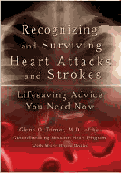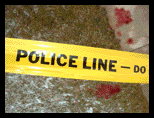Reviews:
Reporter World provides a variety of safety equipment, identification products, specialized high-visibility clothing, pertinent news, product reviews, book reviews and useful links specifically for reporters, writers, assignment editors, news correspondents, journalists, ENG crews, photographers, production staff, directors, segment producers, media security personnel, and freelancers: in short, anyone who is part of the news gathering, information reporting, or documentary film industries.
In this section we review various products and services of relevance to reporters, writers, correspondents, ENG teams and production staff. These products include cameras and accessories; computer hardware and software; scanners; printers; books and other products. Smaller, mini-reviews, are also available in other sections of this site including Products, Books and Movies.
We are constantly adding additional reviews to this section. If you have any suggestions for other products you would like us to review, simply e-mail us using the feedback address on our Terms of Service page. Please supply us with as much information as you can about the product (including name, manufacturer, model number) or book (including title, author, ISBN and publisher).
 Title: Recognizing and Surviving Heart Attacks and Strokes Title: Recognizing and Surviving Heart Attacks and Strokes
Author: Glenn O. Turner, MD with Mark Bruce Rosin
Copyright: © 2008
Publisher: University of Missouri Press
ISBN: 978-0-8262-1794-3
Relevance: Recognizing and Surviving Heart Attacks and Strokes presents life saving advice for people who want to recognize and survive events commonly known as heart attacks and strokes. Considering that many reporters and correspondents die from exactly these events and certainly many of our story subjects succumb to the same tragedies, the book has both personal and professional relevance for all of us.
Review: Finally, a book written by a cardiologist with real front-line training and experience in the frontiers of helping people combat heart disease and stroke. Dr. Turner, a renowned pioneer of modern cardiology, and the founder of the groundbreaking Missouri Heart Program, outlines several simple messages designed to save lives and decrease the risk of life-debilitating injuries.
The book begins with some simple ways to recognize and respond to the early warnings of a heart attack. Turner and Rosin first (briefly) outline the function of a human heart, what happens during a “heart attack”, what are some early warning signs of heart attack (and these are particularly crucial if you want to survive a cardiac event), a short chapter differentiating heart attack from angina, and crucially, what steps to take to get proper and prompt treatment during a heart attack.
Much of the information provided is useful to both prevent and from a patient point of view, know what to do when one is likely having a heart attack. There are many books on the market that extol the virtues of “exercising everyday” or “reducing the fats in your diet”, but Turner and Rosin’s book relate in a serious yet friendly way the science behind these lifestyle choices.
One of the nice points of the book is that it offers both anecdotal and empirical information about whether it is wise to call for an emergency ambulance if one thinks he is having a heart attack. As some of our reviewers have medical or paramedical background, we were surprised to note Turner believes it is often better (and by better we mean one has an increased chance of living) if one eschews the emergency ambulance and gets a family member or friend to drive them in the family car.
As well, Turner and Rosin explain how to deal with possible intransigents of emergency room triage staff and what options a patient has when arriving at the ER presenting with heart attack symptoms. Nicely, we thought, not only do the authors advise readers that their very lives are in their own hands, Turner and Rosin give concrete suggestions on how to better control their possible heart attack outcomes.
Personal experience: Turner himself harkens back to several personal experiences such as his surprising weight gain (to him, anyway) during medical school and the sudden death of a medical mentor in his early medical training that set him on a course to prevent and treat these cardiac events.
The different and varying treatment modalities commonly used in cardiac care are also explained including thrombolysis, angiograms, angioplasty, and coronary artery surgery. Our reviewers appreciated Turner’s way of decrypting the often complicated and certainly potentially frightening treatments, especially what each does and what each doesn’t do. As usual, if one knows what options there are before a crisis, one can make better decisions and not be panicked into making mistakes.
Surprisingly, from an organizational point of view, readers don’t really get into the nitty gritty of the causes of heart attacks and other atherosclerotic diseases until page 99. This is a shame because the chapter dealing with these subjects, specifically cholesterol, triglycerides and the elusive truth behind homocysteine are all well outlined. Science majors will be right at home here and perhaps the book can be criticized for not “dumbing down” the science enough but for our reviewers, the actual science behind heart attacks was quite intriguing.
Strokes or what Turner and Rosin call “brain attack” (an obvious analogue descriptor to "heart attack") are up next. Here, in ten pepper-short chapters, the two authors outline much information about strokes and associative events.
It is only until Part 5 – Prevention of Heart Attacks and Strokes: Solving Problems before They Happen, that we get into any actionable steps by the reader to actually reduce the risks of both death and injury of heart attack and stroke. Losing weight and preventing weight regain, as well as how a person benefits from physical activity are covered in just one chapter in this section.
Organizationally, the book opts for a series of short chapters, some as short as 3 pages, giving readers real answers to what’s wrong with low carb diets, how much is "too much" when it comes to carbohydrates, fat and protein, and the importance of controlling cholesterols and blood fats. We applaud this rapid style of reading because people, no matter how concerned they might be with their personal health, have been acclimatized to expect short, almost bulleted lists of what to do...and when. It is a credit to Turner and Rosin’s book that they often find the space to answer the whys and hows of the problem as well.
Finally, we would have liked to have seen better graphics and more clear organization of the material, although on this later point, we note it is often difficult to discreetly organize complex and often interrelated ideas.
Overall:
We enjoyed Recognizing and Surviving Heart Attacks and Strokes as it is one of the few books on the market that answer the dual questions, “what can I do to live a longer, healthier and happier life?” and "how can I increase the chances of surviving a cardiac event?". Highly recommended for any reporter or correspondent covering the health, medical or science beats, as well as the obvious demographic of people who enjoy hanging around a bit longer than they otherwise would.
End of Review
Have your say.
You can give us your feedback by visiting our Terms of Service page.
Buy this book.
If you wish to buy this book right now, please click here.
Read other reviews.
If you wish to return to the main Reviews page, please click here.
|
|
|





